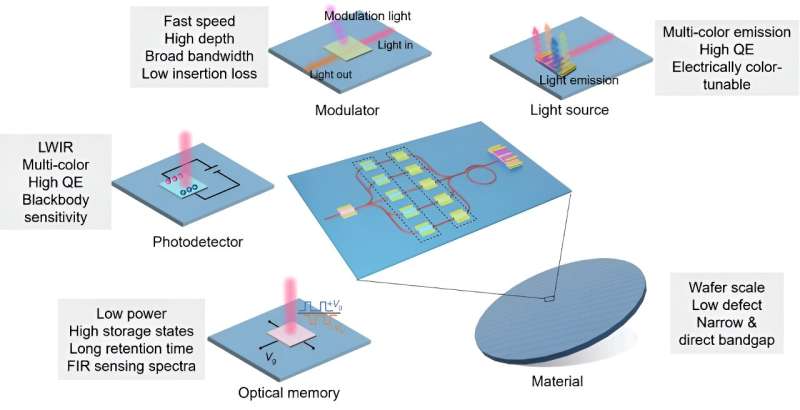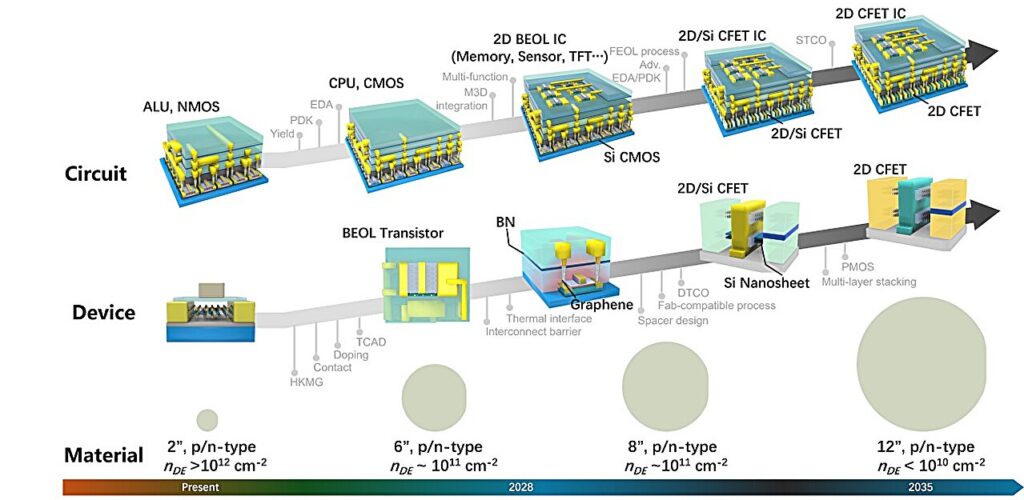In a significant stride forward for the semiconductor industry, a new review paper from the “Shuang-Qing Forum” offers a comprehensive overview of the advancements and strategic roadmap for two-dimensional (2D) materials.
This collective effort from leading Chinese scholars outlines the transition of 2D materials from basic research to industrial development, highlighting the critical role of dedicated tools, AI, and academia-industry collaboration to drive this technological revolution.
The research is published in the journal Science China Information Sciences.
A new era in semiconductor miniaturization
Over the past 70 years, the semiconductor industry has been a driving force behind technological advancements, with continuous miniaturization and performance improvements.
The pursuit of Moore’s Law has led to the exploration of novel materials and geometries, among which 2D materials like transition metal dichalcogenides (TMDs) stand out as potential candidates for the next-generation transistors based on atomically thin channel.

Strategic roadmap for 2D materials
The review paper emphasizes the need for dedicated technologies and tools to meet industrial standards for 2D materials. It underscores the importance of material growth, characterization, and circuit design, setting the stage for a collaborative effort between academia and industry to drive the next decade of 2D material research. The main parts of the roadmap include:
- Materials, scaling up with precision: The future of 2D semiconductor materials hinges on scaling up production with precision. The industry has made strides with 2-inch n-type single-crystal wafers, but the challenge of material defects remains. The development of larger single crystals with precise defect control and the cultivation of p/n-type materials that match silicon’s performance are the primary directions for future advancement.
- Characterization, the indispensable role of AI: Sophisticated characterization techniques have reached sub-atomic resolution levels, meeting the demands of 2D materials. The integration of AI tools is vital for standardized and refined assessment criteria, ensuring accuracy and efficiency in analyzing experimental metadata.
- Electronic devices, synergy of BEOL and FEOL: 2D semiconductor devices are progressing towards performance metrics that rival silicon-based devices. Future advancements will focus on foundational technologies such as HKMG integration and controllable doping, with a focus on optimizing performance, power consumption, and area.
- Thermal management and interconnects, overcoming RC delays: Effective thermal management and reduction of RC delays are critical in semiconductor devices. The use of materials with a lower dielectric constant and the integration of 2D materials like hexagonal boron nitride (h-BN) and graphene are set to enhance performance and reliability.
- Integrated circuits, embracing 3D integration: The future of integrated circuits (ICs) based on 2D semiconductors is moving towards 3D integration. This transition will leverage the advantages of 2D semiconductors for monolithic 3D heterogeneous integration, enhancing chip-level energy efficiency and functionality.
- Optoelectronic integration, the path to high-throughput technologies: Optoelectronic integration is poised to become a pivotal direction in high-throughput information technologies. The synthesis of large-scale, high-quality single crystals and the advancement of multifunctional integrated devices are key to this future trajectory.


